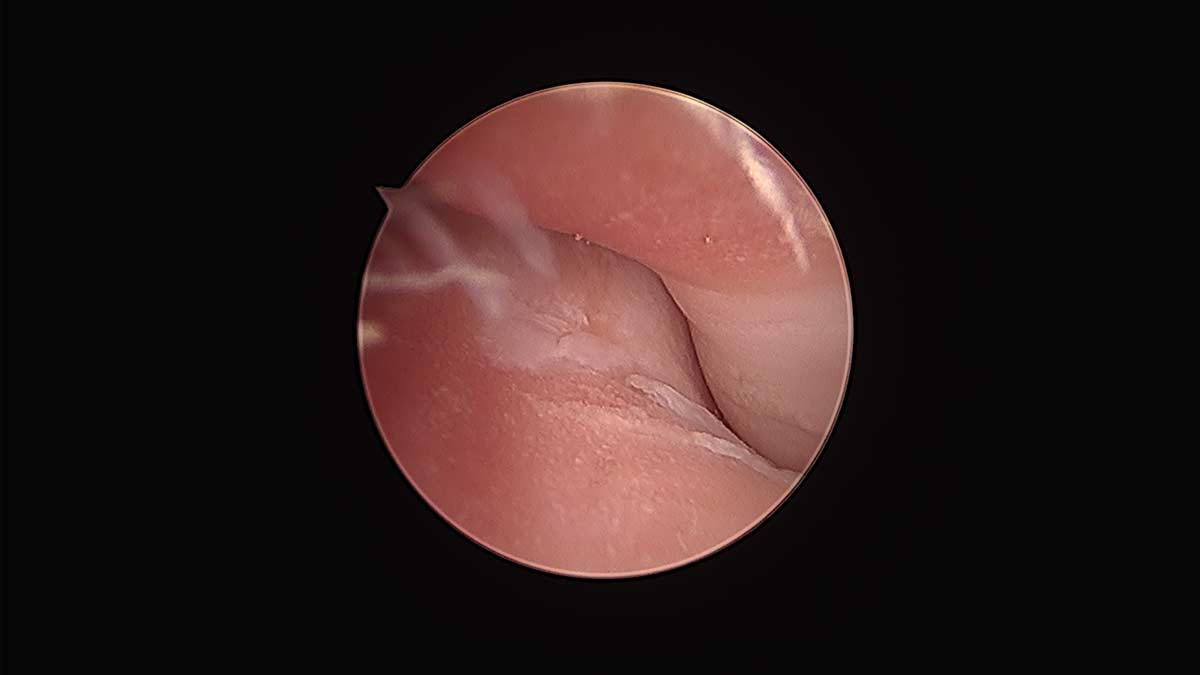Canine Elbow Dysplasia Diagnosis and Treatment
The word "dysplasia" means "abnormal development." The elbow is a complex joint involving the articulation of three bones (humerus, radius, and ulna). If the three bones do not fit together absolutely perfectly as a result of abnormal development, the consequence is an abnormal concentration of forces on a specific region of the elbow joint. Forms of primary cartilage disease may also constitute abnormal development. Unlike the term hip dysplasia, which describes a specific condition affecting the hip joint, elbow dysplasia is a generic term representing several conditions affecting the elbow.
Effective treatment requires definitive diagnosis of the specific condition resulting in elbow dysplasia. Each form of dysplasia has similar presenting signs, however the treatments are variable based on the specific condition and time of diagnosis within the disease process.
Regardless of the cause all forms of elbow dysplasia can result in progressive osteoarthritis, degenerative joint disease and erosion of cartilage surfaces within the joint. This can lead to severe pain, limited mobility and a general deterioration in quality of life. Early detection and treatment generally result in better outcomes and slower progression of degenerative joint disease; however, new replacement techniques are now available to treat chronic debilitating arthritis. Call (406) 548‑4226 to schedule an appointment today.
Clinical Signs and Diagnosis of Canine Elbow Dysplasia
Most dogs begin exhibiting signs of elbow dysplasia between 6 and 9 months of age however first-time lameness as a result of elbow dysplasia at any age. The most common signs are forelimb lameness (one or both front legs). Many dogs will stand with their paws turned slightly outward and their elbows can be held out or tucked in.
Diagnosis involves a combination of physical exam findings, history, radiography (X-Rays) computed tomography, and arthroscopy. Arthroscopy involves placing a small camera into the affected joint through an incision a few millimeters in length. Arthroscopy has become the gold standard in diagnosing and treating elbow dysplasia because it provides direct visualization of the elbow enabling a definitive diagnosis and possible treatment in a single minimally invasive procedure. This allows for increased comfort, earlier return of function and less progression of osteoarthritis.

Fragmented Coronoid Process (FCP)—The most common cause of elbow dysplasia. The coronoid process is a small prominence of bone on the medial (inside) ulna and in front of the humerus. It is currently believed that a FCP develops through abnormal wear/stress and micro fracture through the coronoid resulting in fragmentation of this prominence. The resulting "loose" fragment can result in irritation, inflammation and osteoarthritis. An FCP may be a "bystander" in the process of elbow dysplasia in many cases. Removal of the FCP may improve clinical signs, however in many cases the abnormal wear of cartilage surfaces which resulted in the FCP may also need to be addressed.
Osteochondritis Dissecans (OCD)—Often referred to as a cartilage flap, OCD is an abnormality in endochondral ossification resulting in a poor connection between cartilage and the underlying bone. The result of this weak connection is separation and peeling away of the cartilage from the bone leading to lameness, pain, and progressive osteoarthritis.
Ununited Anconeal Process (UAP)—A UAP is defined as lack of fusion of the anconeal process (a prominence of bone on the ulna and behind the humerus) by 20 weeks of age. This condition is seen most commonly in German Shepherds. Treatment options include surgical stabilization of the UAP in young patients and excision in older patients. Though this condition is present from an early age, it is not uncommonly found as a cause of acute onset lameness in older animals.


Elbow Incongruency—This form of elbow dysplasia can occur from abnormal asynchronous growth of the humerus, radius or ulna. In the normal elbow joint, each of these bones fits precisely together to form a congruent joint. With any length discrepancy or conformational change in any one of these bones, incongruence of the elbow occurs resulting in pain and progressive osteoarthritis. Several lengthening and or shortening techniques exists to reestablish congruency of the elbow. Early detection of elbow incongruency is essential for successful treatment.
Medial Compartment Disease (MCD)—progressive osteoarthritis—Osteoarthritis from elbow dysplasia may result in complete loss of cartilage on the weight-bearing surfaces of the medial joint structures resulting in what is called Medial Compartment Disease (MCD). In this "end stage" form of elbow dysplasia, the medial joint collapses with eventual grinding of bone (humerus) on bone (ulna). Traditionally once OA and abnormal wear resulted in full thickness cartilage erosion, few surgical options existed to treat elbow dysplasia. Interestingly and importantly, the larger lateral (outside) part of the elbow joint appears normal. MCD can be diagnosed in dogs as young as 6 months of age or may become apparent in any age after that. Many dogs do not exhibit clinical signs until later in life when the osteoarthritis becomes severe. Changes in activity level, limping, swollen elbows, pain in the elbows, decreased performance, and behavioral changes are some of the clinical signs. New replacement/resurfacing techniques are now available returning once severely arthritic patients back to normal pain free activity levels.

Treatment of Canine Elbow Dysplasia
Elbow Arthroscopy—Early surgical intervention with arthroscopy to evaluate the medial compartment of the joint, remove loose fragments, and smooth the joint surface (chondroplasty) is recommended. In young dogs (<1 year) without signs of cartilage wear and full thickness loss, this may provide a more comfortable elbow, but it will not eliminate the osteoarthritis and the potential for progressive MCD. As dogs become older and MCD progresses, lameness, pain and limited mobility result. Traditionally, once full thickness cartilage erosion has developed, little could be offered to alleviate pain and restore normal pain free activity levels.
Canine Unicompartmental Elbow Resurfacing(CUE)—Options such as oral medications, joint injections, and physical therapy may be beneficial in some cases for at least a period of time and should be discussed with your veterinarian. When surgical treatment is deemed necessary, as is often the case, the Canine Unicompartmental Elbow (CUE) is a safe and effective option to consider. CUE was developed as a treatment for MCD for dogs in which arthroscopic treatment and the nonsurgical options are no longer successful. By focusing on the specific area of disease (the medial compartment), the CUE implant provides a less invasive, bone-sparing option for resurfacing the bone-on-bone medial compartment while preserving the dog’s own "good" cartilage in the lateral compartment. This medial resurfacing procedure reduces or eliminates the pain and lameness that was caused by the bone-on-bone grinding.


To learn more about the diagnostic and treatment options available at Bridger Veterinary Specialists & Emergency contact us at (406) 548‑4226 or info@bvspets.com.
